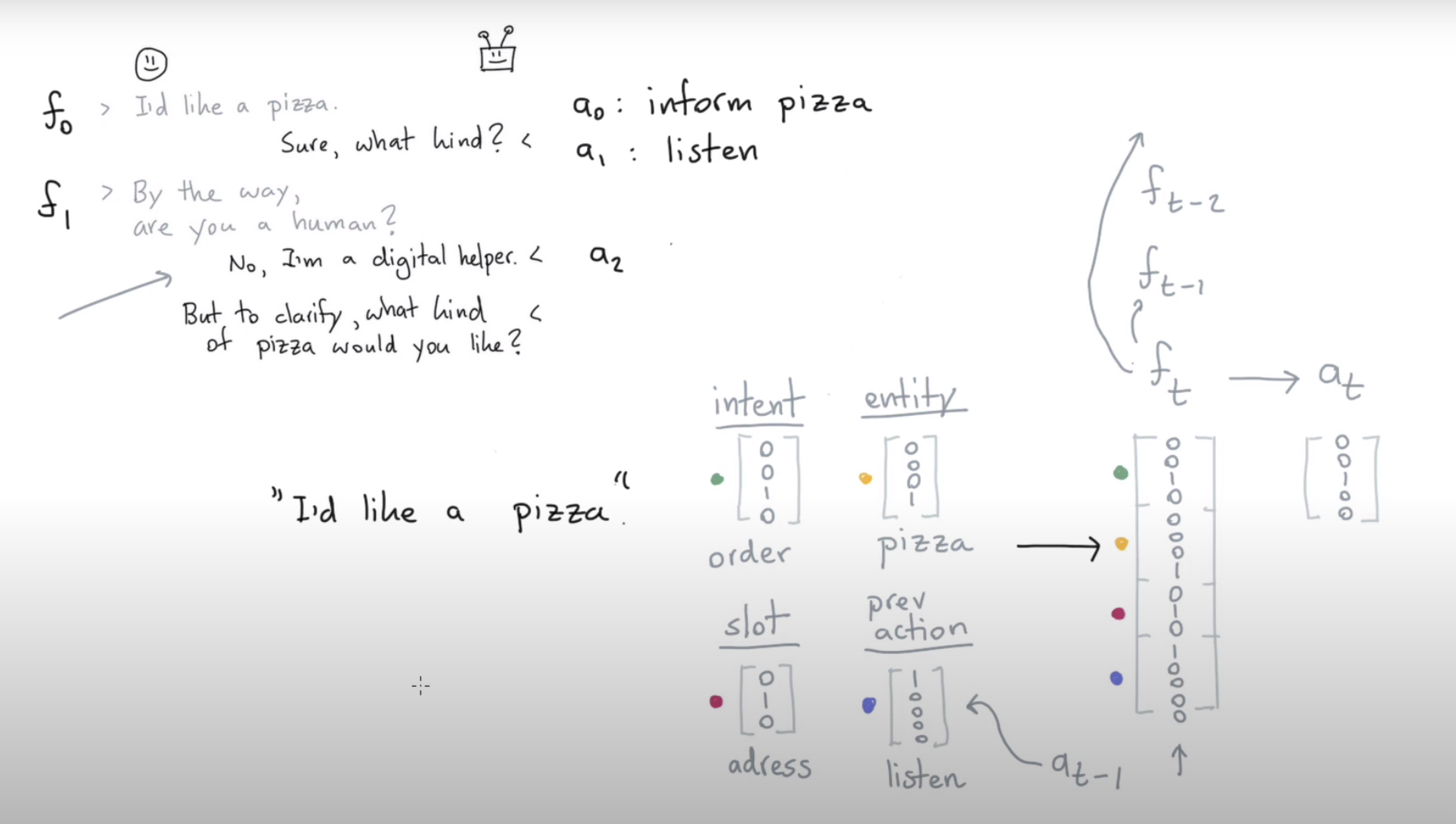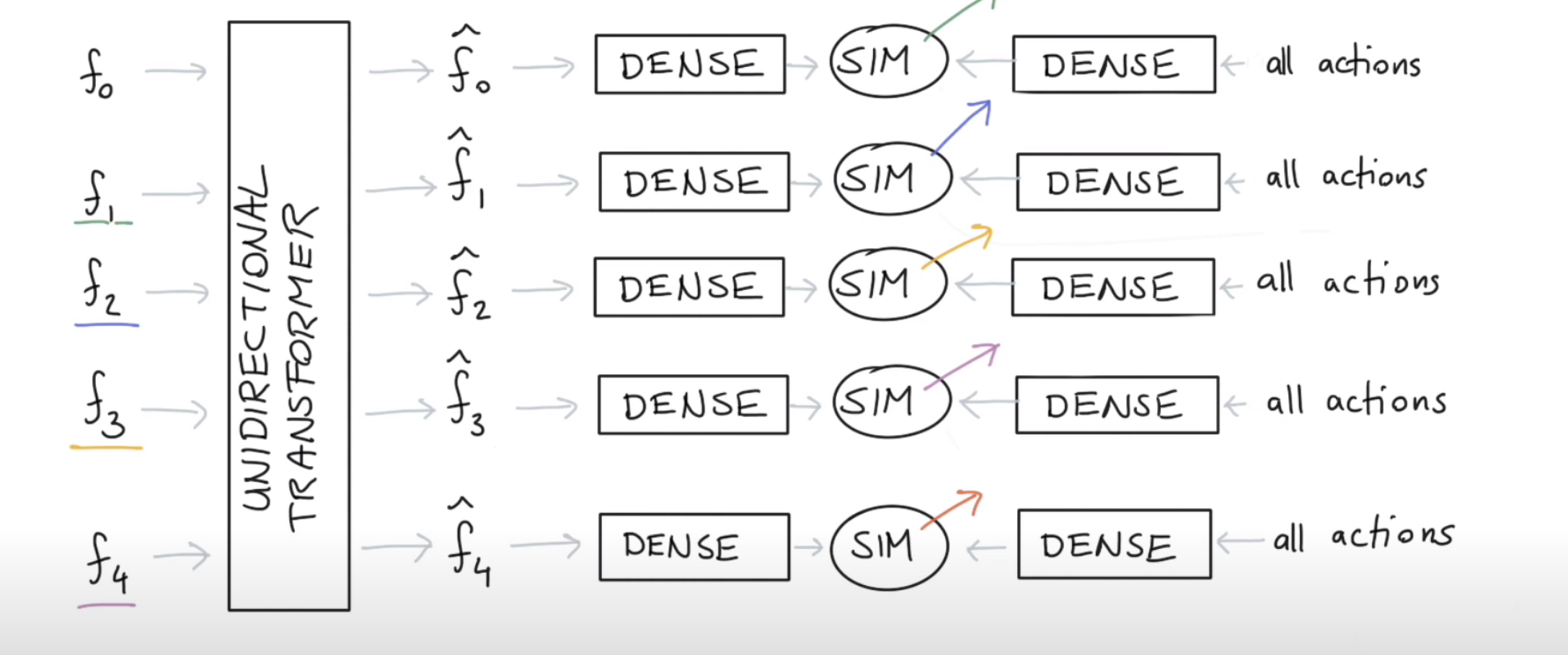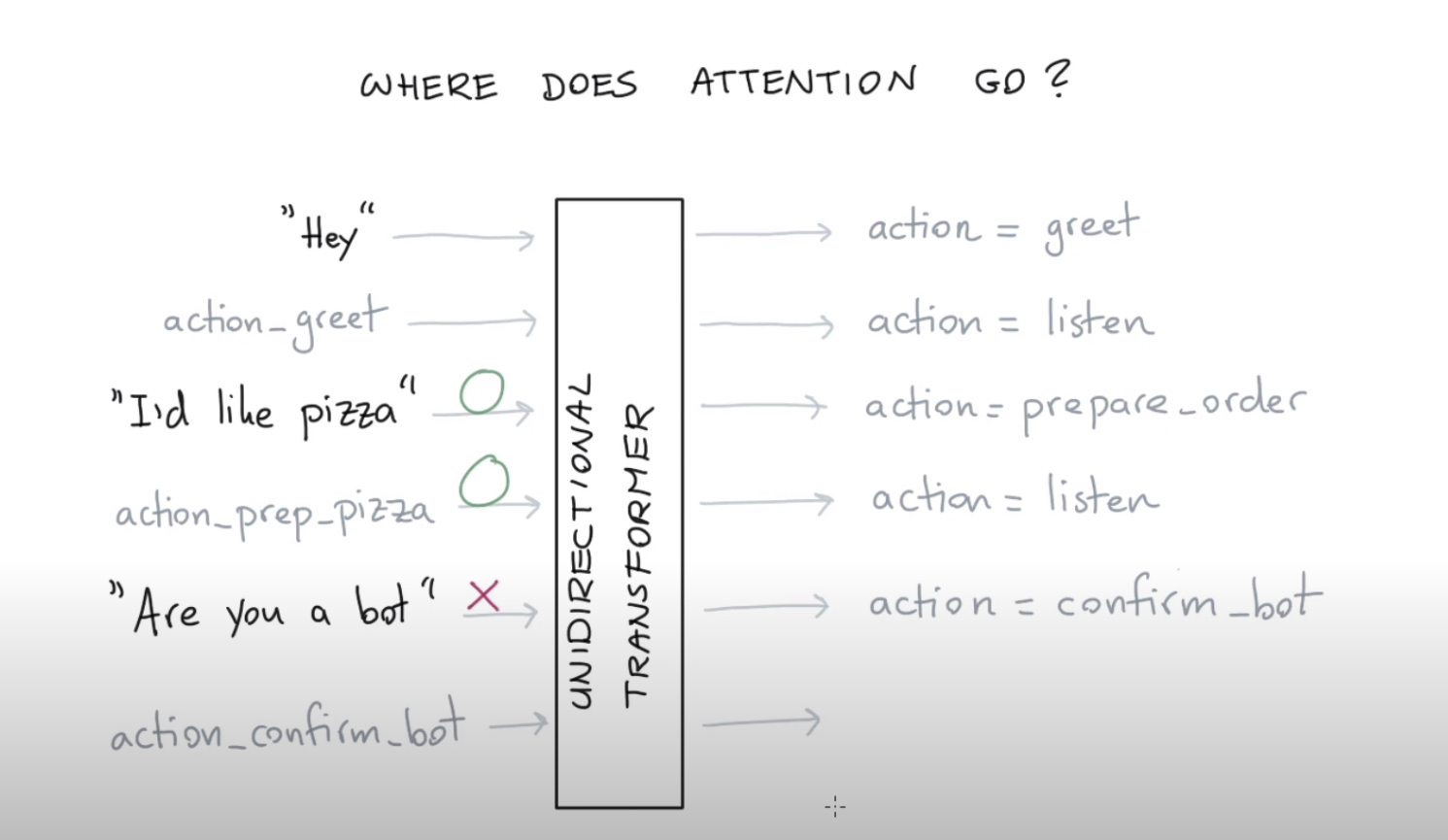Algorithms for Chatbot
DIET Architecture
Rasa uses Dual Intent and Entity Transformer (DIET) architecture to detect both Intent and Entity using Transformer.

The DIET architecture can be customized to a specific domain. The architecture can be thought of as lego blocks. We can customize and use the blocks we want for our use case. Depending on the accuracy, latency and memory usage of the use case we can decide which components to use.
TED Architecture
TED is used to decide what next action to be taken by the bot given the conversation with the user.



TED is not trained on sequence of events which happen in the dialog. In dialog lot of context switching will happen. Using Transformers here will be useful because transformers can pay attention to dialog events which occured in the past.

Response selection
